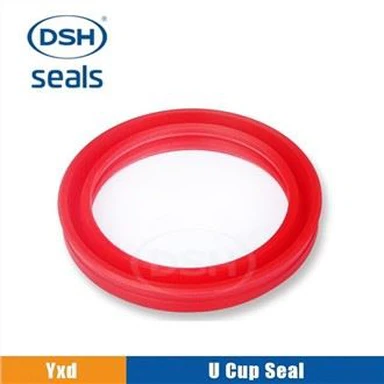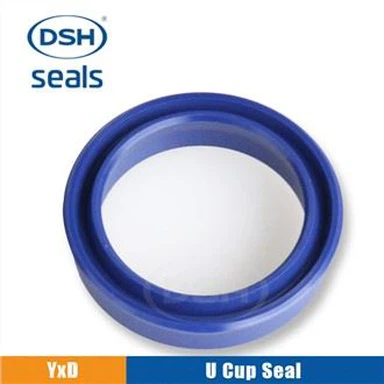The bad use of the six properties directly affects the sealing effect
Jun 01, 2022
1. Movement speed:
When the moving speed is very low (<0.03m/s), the stability of the equipment operation and whether there is a "crawling" phenomenon should be considered. When the moving speed is high (>0.8m/s), the lubricating oil film may be blocked by If the oil seal is damaged, the oil seal will generate friction and heat because it cannot be lubricated well, resulting in a greatly reduced service life.
It is recommended that the polyurethane or rubber-plastic oil seal work within the speed range of 0.03m/s~0.8m/s.
2. Temperature
Low temperature will reduce the elasticity of the polyurethane or rubber-plastic oil seal, causing leakage, and even the entire oil seal will become hard and brittle. High temperature will make the oil seal volume expand and soften, resulting in a rapid increase in the frictional resistance of the oil seal and a decrease in the pressure resistance capacity during movement. It is recommended that the continuous working temperature range of polyurethane or rubber-plastic oil seals is -10C~ +80C.
3. Work pressure
Oil seals have a minimum service pressure requirement. For low-pressure work, oil seals with low friction performance and low starting resistance must be selected. Below 2. 5Ma, polyurethane
Grease oil seals are not suitable; under high pressure, the pressure deformation of the oil seal should be considered, an anti-extrusion retaining ring should be used, and there are special requirements for groove processing.
In addition, oil seals of different materials have different optimal working pressure ranges. The optimum working pressure range for the polyurethane oil seal is 2.5~31.5MPao
The effects of temperature and pressure on sealing performance are interrelated, so comprehensive consideration should be given. See table:
Imported polyurethane PU material | ||
great work pressure | ||
Big | temperature range | temperature range |
Movement speed | 25~+80 | 25~+110 |
0.5m/s | 28MPa | 25MPa |
0.15m/s | 40MPa | 35MPa |
4. Working medium
In addition to selecting the working medium strictly in accordance with the manufacturer's recommendations, it is essential to keep the working medium clean. The aging or contamination of the oil will not only cause the components in the system to fail and accelerate the aging and wear of the oil seal, but also the dirt in it may scratch or embed the oil seal, causing the seal to fail. Therefore, the oil quality and its cleanliness must be checked regularly, and the oil filter or oil must be replaced according to the maintenance specifications of the equipment. The air remaining in the oil in the oil cylinder will be compressed by high pressure, which will cause high temperature to burn out the oil seal, or even carbonize. In order to avoid this situation, exhaust treatment should be carried out at the beginning of the hydraulic system operation. The hydraulic cylinder should also run at low pressure and slow speed for several minutes to confirm that the air remaining in the oil has been exhausted before it can work normally.
5. Side Load
A support ring must generally be installed on the piston to ensure that the cylinder can withstand a large load. Seals and back-up rings serve completely different functions, and seals cannot replace back-up ring loads.
Hydraulic cylinders with lateral force must be equipped with supporting rings with strong bearing capacity (metal rings can be used for heavy loads) to prevent leakage and abnormal wear caused by oil seals working under eccentric conditions.
6. Hydraulic shock
There are many factors that produce hydraulic shock, such as the moment when the excavator bucket suddenly hits the stone, and the crane lifts or puts down the heavy object. In addition to other factors, for the hydraulic system in high pressure and large flow, when the actuator (hydraulic cylinder or hydraulic motor, etc.) changes direction, if the performance of the reversing valve is not good, it is easy to produce hydraulic shock. The instantaneous high pressure generated by the hydraulic shock may be several times the working pressure of the system. Such high pressure will tear the oil seal or squeeze it into the gap in a very short time, causing serious damage. - Generally, the cylinder with hydraulic shock should install a buffer ring and a retaining ring on the piston rod. The buffer ring is installed in front of the oil seal to absorb most of the impact pressure, and the retaining ring prevents the oil seal from being squeezed into the gap under high pressure, and the root is bitten.







